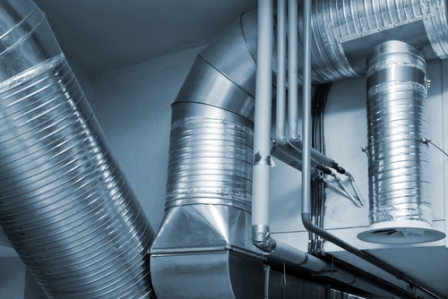 The most advanced HVAC technology you can buy has little value when ductwork design is neglected. In the past, the layout of residential ducts was often based on a “one size fits all” philosophy. Cost-cutting, not performance and efficiency, was the priority in fabrication and installation.
The most advanced HVAC technology you can buy has little value when ductwork design is neglected. In the past, the layout of residential ducts was often based on a “one size fits all” philosophy. Cost-cutting, not performance and efficiency, was the priority in fabrication and installation.
Today, ductwork in existing homes is frequently delivering efficiencies barely over 50 percent, while leaking air at a rate of up to 40 percent of system airflow. Improper ductwork design belongs to a bygone era. Computer-aided cooling and heating load calculations and duct sizing have made efficient design a science. Many shortfalls in installed systems can be corrected and new mistakes avoided when ductwork design receives the priority it deserves.
Here are some of the goals of a well-designed system:
- Route as much ductwork as possible within the conditioned envelope of the house.
- Avoid utilizing structural cavities such as wall voids and the channels between ceiling joists as a replacement for proper “hard” ductwork fabricated of metal or fiberglass.
- Reduce duct branch spans and increase efficiency by installing supply ducts/vents in interior walls.
- Design a dedicated return duct for each supply duct in every room. Where this isn’t feasible, ensure a clear air path to a central return duct by installing air pass-through grilles in doors and/or jumper ducts through ceilings to interconnect return airflow between rooms.
- Separate supply vents as far as possible from bathroom and kitchen exhaust fan inlets to avoid inadvertent conditioned air loss.
- Reduce thermal loss from ducts in unconditioned zones like the attic by insulating ductwork to the International Energy Conservation Code minimum of R-8.
- Install manually operated dampers in duct branches to modulate airflow and make balancing air distribution to rooms easier.
- Make sure that all duct joints are mechanically fastened then sealed with mastic and metal foil tape. Pressure test existing ducts and specify sealing when air loss exceeds 5 percent of total airflow.
Since 1963, Hartman Brothers Heating & Air Conditioning has served the Fort Wayne area with trusted sales, service and installation. Let us help you with a ductwork design that delivers optimum energy efficiency and interior comfort performance.
Our goal is to help educate our customers in New Haven, Indiana and surrounding Fort Wayne area about energy and home comfort issues (specific to HVAC systems). For more information about ductwork design and other HVAC topics, download our free Home Comfort Resource guide.
Image courtesy of Shutterstock
